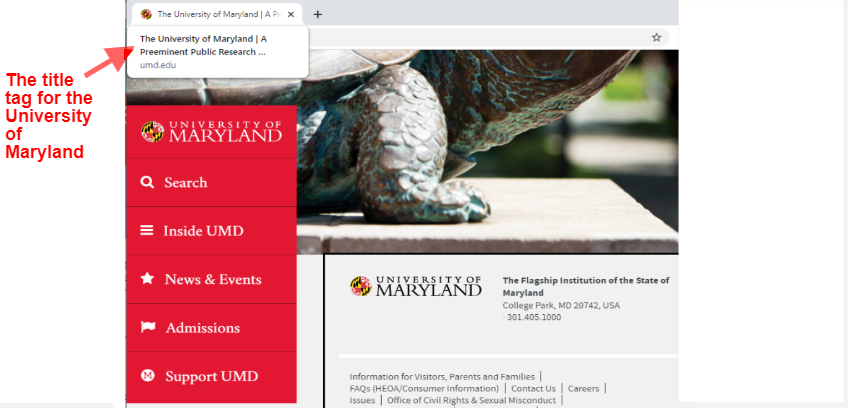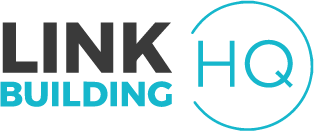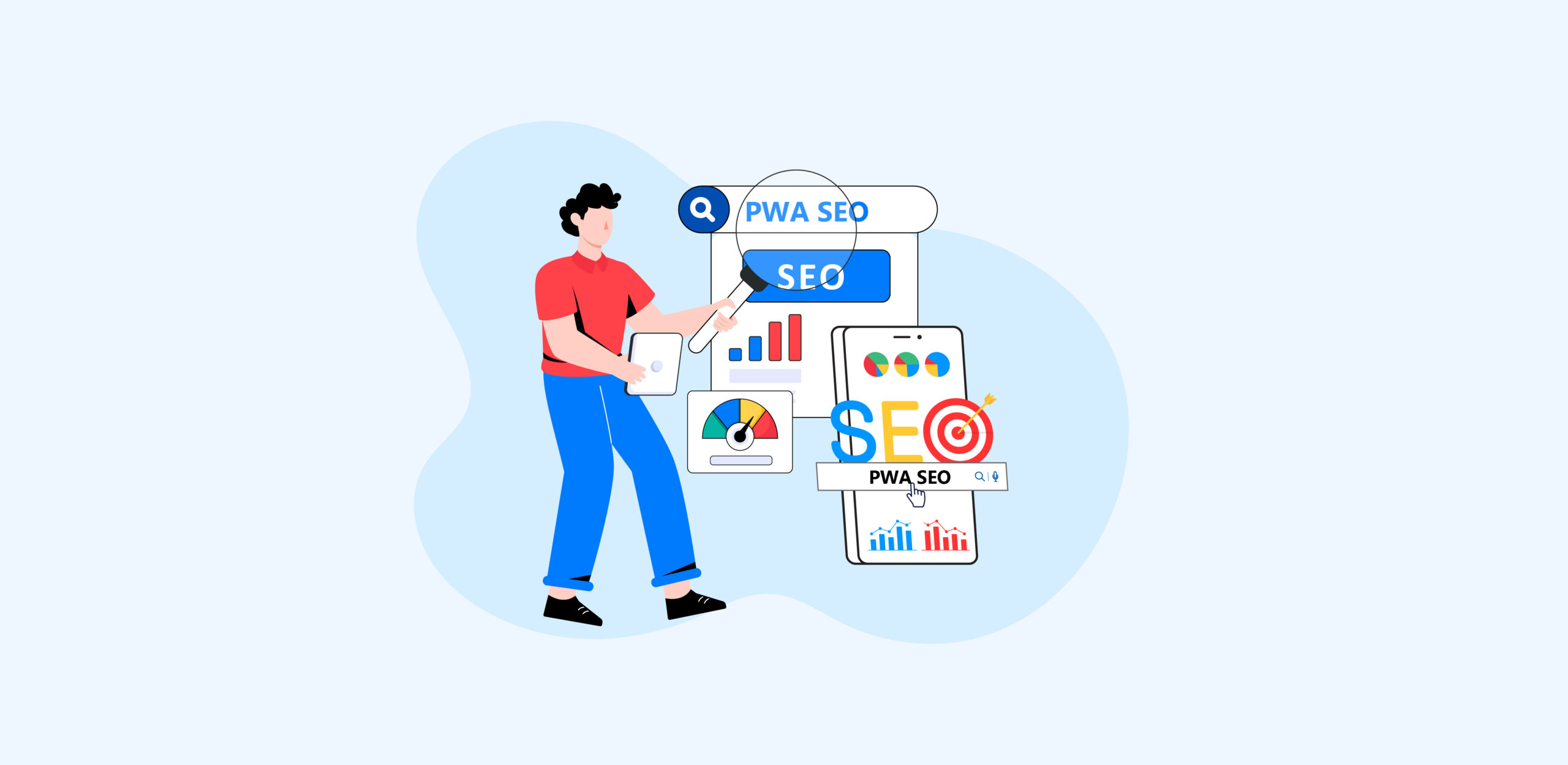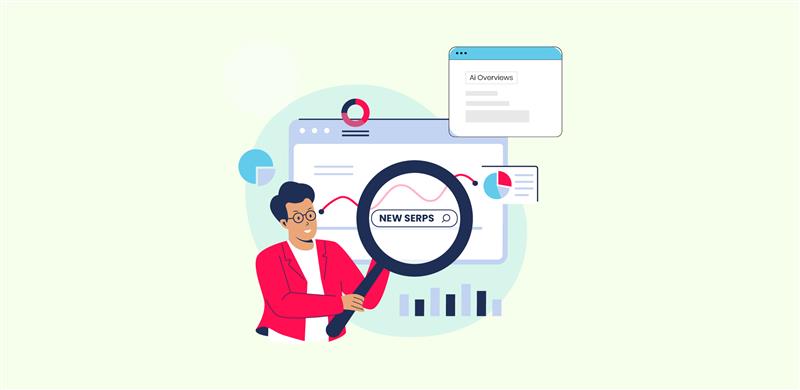The rise of digital marketing has opened up plenty of doors of opportunity for the modern-day marketer. And while it has proven its effectiveness in almost all areas, the potential of digital marketing in the education sector is still relatively unexplored.
Here are some stats to get started:
- There are over 5,000 colleges and universities in the U.S.
- The number of college students is projected to reach 11 million by 2029.
- Most importantly, 9 out of 10 students are unsure about which school to attend – which puts them in the “research phase”.
As students become more tech-savvy and have exposure to a lot of information on the web, they can make more informed decisions about their academic future. That’s why educational institutions must have a strong digital presence.
Without the use of digital marketing for education, increasing awareness about your institute and achieving business objectives can become an uphill battle in this day and age.
But even in digital marketing for educational institutes, things aren’t as simple as they seem. You have to prioritize your efforts. With plenty of digital channels available, it can seem a daunting task to decide the right course of action.
In this blog, we will go through 3 of the most effective digital marketing areas your educational institute can explore to have better exposure and increase the chances for a high enrolment rate. They include:
- Search Engine Optimization
- Paid Advertising
- Social Media Marketing
Let’s get started with SEO for education!
Use SEO to Increase Organic Traffic
If you ask any student about their number one source to get information on different colleges and universities, they will probably say online search. This is also reflected in a survey of 726 high school students conducted by the National Research Center for College and University Admissions (NRCCUA).
It showed that online searching was the top method used by prospective applicants to explore different academic programs and the second most popular method used both during and after the admissions process.
Also, as per a trends report in 2019, college websites were the most influential and reliable source for parents and students when it came to selecting a university.
That tells a lot about the importance of appearing in those search results. Not only that, once a student lands on a college’s website, the content, the user experience, and the aesthetics all need to be spot on.
That is where search engine optimization, better known as SEO for schools and education, can help a ton. And the best part is, if you do it right, it can be one of the most cost-effective and long-lasting ways to generate leads and eventually convert those leads into students.
So let’s discuss the 3 pillars of SEO for educational institutions, starting with keyword research.
Keyword Research

Keyword research is the first step for any education SEO strategy. And it starts with initially understanding who your target market is. Here is a quick rundown for you on how prospective students may look for suitable educational institutes.
First up, they will use certain keywords like “universities for media sciences.” Based on their location, search history, and the relevance of potential matching results, Google will show results accordingly. That is why it is so crucial that you spend a lot of time in this first step. Get into your prospective students’ shoes and see what words they are most likely to use to get to your website.
Ask yourself questions like “What programs are my institute offering?” “What courses are included in these programs?” “Are these courses available online?” “Do I have a well-known faculty that I can highlight in the searches?”
Brainstorm for both long-tail keywords, which have a bit broader search intent and less competition, as well as short-tail keywords, which are narrower in their intent and therefore have more competition to get ranked for.
We did some digging on our end and found a few keywords with a good volume. Again, there are various techniques you can use to get a keyword list that works for you. Here are a few examples of templates that we used to get the relevant keywords related to SEO for higher education:
1 . “Institute type” + “location”:
- Dental universities in LA
- Medical schools in California
2 . “Top universities” + “program”:
- Top universities for aeronautical engineering
- Top universities for physics programs
3 . Popular Questions:
- Jobs you can get with an MBA
- Colleges that accept dual enrollment credits
- Law school requirements
4 . “Best online colleges” + “program”:
- Best online colleges for computer science
- Best online colleges for business
Think Location Specific Keywords

Then, based on the information being displayed on the search results page (SERPs), students will click on the link that they think will satisfy their query the most. So, it won’t be a bad idea if you also target location-specific keywords.
For example, if you have a college in Michigan, you can add location modifiers and transform the above search query into something like “universities for media sciences in Michigan.” This will help not only local but also international students who want to pursue higher education overseas.
To back your initial list with numbers or even expand it, you can use a free tool from Google called Google Keywords Planner. And if you want to further up your game, a paid tool like Ahrefs will make your keyword research a breeze. The entire idea behind keyword research is to identify relevant keyword clusters and connect them with your value proposition to increase the number of qualified leads.
Have a Powerful Blog For Your Website
One of the best places to test out your keywords list is the blog section of your education website. It is unequivocally the most effective way to supercharge your rankings. That’s because you’re able to connect with your students better and explore various topics related to student life in general, all the while optimizing for important keywords.
For example, this blog from the University of Vermont discusses the story of alumni and how UVM’s digital marketing program helped her succeed in a new job. So popular keywords like “job as an SEO,” “digital marketing certificate program,” and “digital marketing students” were all in play here.
There are plenty of other evergreen topics like “how to find internship opportunities” as well as trending topics like “online education” on which your blog can revolve.

On-Page SEO Factors
The next piece in building a strong SEO foundation for your college’s website is a group of factors known as on-page SEO.

Essentially, on-page SEO refers to the process of optimizing your college’s website. This includes everything from your page speed, title tags, URLs to your images, and more. Notice how all these factors are on your page, hence the name on-page SEO.
It’s a pretty bad sign when a student clicks on your website only to find that the site is taking too much time to load or, worse yet, crashes completely.
By conducting regular audits of your website for on-page factors, you ensure that you don’t face such issues. Otherwise, your fate won’t be different than UMBC when its website famously crashed after its men’s basketball team won an upset victory over the favorites, the University of Virginia, in the 2018 March Madness. Imagine the number of prospective leads they could have converted if only their server hadn’t given up.
So here are the most important on-page SEO factors you need to keep an eye on:
Meta Title
The meta title is the HTML header that you see on top of the tab when you open a new page on a website. It gives you an idea of the type of content you’re about to view on the page. For instance, the webpage of an educational institute will display the name of the institute in the title tag.

Meta Description
To put it simply, a Meta description is a summary of a page. When you search for a topic on the search engine, you often see the result displayed with a title and description. That description is actually called meta-description and has an equally important role to play in your website’s SEO.
So make sure to make it as enticing as possible, as it can be the difference between a student clicking on your link or just scrolling past it. If you have been rated by an accredited body, do highlight it in the SERPs.
Image Optimization
Adding images to your website can help make it look more pleasing and user-friendly. However, they are also the most common cause of slowing down your site speed, thus hurting your chances of ranking it. This can be solved by optimizing your images and adding alt text that helps describe the contents of the image in the text.
So for example, if you have a media section on your website showing your college’s library, make sure that the images there have a set size dimension, are fully optimized, and have alt text like “Library of the XYZ College”. This way, you can also appear in search results for the same query.
URL
You need to strike the right balance when it comes to your URLs. As a best practice, they need to be descriptive yet concise. And if there is a relatively long one, you can use hyphens in between for better readability.

Off-Page SEO
Contrary to on-page SEO, off-page SEO, as the name suggests, comprises all the tricks and tactics that you can use outside your website to help it gain a higher ranking on the search engine.
The biggest factor that dictates the success of your off-page SEO is link building. For Google, it is one of the most important ranking factors.
What it means is that for your website to be credible and authoritative for certain keywords, it needs to be linked to other authoritative websites. So, virtually, a link acts as a vote of endorsement.
Following are some tips to help you with the link-building of your website:
Anchor Text
An anchor text is that blue text that appears as a hyperlink on websites linking to yours. Having a keyword in your anchor text helps a lot. So, for example, an anchor text like, click here or see this can be put as one of the top colleges in Kansas with “colleges in Kansas” being your keyword. However, always chop and change your anchor texts to avoid any penalties from Google.
Citations on Portals and Blogs
Since prospective students spend most of their time reading blogs and checking portals to search for suitable colleges or universities, if you’re able to feature on such platforms, you will not only be able to have higher traffic but also gather lots of authority. Some websites that you can reach out to in this regard are niche.com, collegemagazine.com, timeshighereducation.com, etc.
Content Rich Infographics
One great way of earning high-quality links is by creating content-rich infographics. If you have a research study, you can make it a source of link-building for your website. Ask your existing students and faculty members to share it on different websites and social media platforms. Make sure to embed your website’s link so that all the shares can translate into higher traffic and authority for you.
Landing Page Optimization
Once prospective students visit your website, the experience they have in terms of the content, the design, and the speed of the page must all fall in place for them to be converted as leads. Here are a few tips for you to build an optimized landing page:
- Keep the main content of your page above the fold (meaning the content that a user first sees when the site loads).
- Keep your Call to Action buttons visible and easy to understand.
- Always add your contact information and share the next steps.
- Use testimonials of existing students and faculty members on what sets your institute apart.
- Keep the page responsive for mobile users.

Paid Campaigns for Conversions
Moving on from SEO, another way to complement your digital marketing for education is to use paid advertising. Compared to the traditional means of advertising, paid advertising on online platforms presents a compelling case. That is because you’re able to track exactly what’s working and what’s not and scale accordingly.
Moreover, the amount of data and insights you get about your prospective students’ behaviors can be used to inform your SEO campaigns, too. So, here are some top tips for you to run your paid campaigns:
1 . Like everything else, the starting point for your paid campaign should be deciding upon your objective. Which stage of the marketing funnel does your audience belong to? Here are a few scenarios for you and the respective objectives you can choose:
- If you have a new website or have revamped the old one, run website traffic ads to see what your audience thinks.
- If you have an open day, a seminar, or any event that you think will help in making up the minds of your prospective students, you can use conversion campaigns to have a bulk load of sign-ups.
- If you’re trying to promote your institute to an audience in a relatively new region where you’re not that popular, use brand awareness ads with compelling copies.
- If you’re looking to push a certain degree program, you can run lead ads and get a representative to call and convert those leads.
2 . One thing that really supplements the benefits of paid advertising is re-targeting. With 44% of prospective students converting between 60 and 120 days after first looking at a higher education website, retargeting ads are just the push needed to convert such leads. Even though the process is slow it is worth the effort. The idea is to reach out to students who, at some point, showed interest in getting information about your institute.
It could be that they clicked on your paid or organic link and visited your website or your close competitor’s website. With retargeting, you are also able to expand the size of your audience.
The most common approach is to start with an engagement or brand awareness campaign. Among the students who visited your website but did not convert into a lead from those campaigns, you can continue showing them different ads about your institute and highlight your unique value proposition.

Social Media Content Strategy
Another important aspect of digital marketing for education industry is Social Media Marketing. There’s no doubt that the trend of social media is booming day by day. And since most of the prospective students are in the age bracket of 18-35, there’s a high probability that they look at social media profiles of the colleges or universities that interest them.
Hence, educational institutes can take advantage of this opportunity by developing a strong social media strategy.

Always remember to include the link to your institute’s website on all the popular platforms where you’re present to have higher traffic and authority for your website. Here are some content strategies on which your social media content can revolve around:
Promote Your Values
First up, your content needs to establish your institute’s values. Let your audience know what you believe in and stand for. Create a short video highlighting the legacy of your institute.
Promote Events
If you have any events coming up, try promoting them by uploading their posters on social media. Use Facebook’s event feature to see how many people have signed up. This way, your visitors will get to know more about your institute and the kind of activities it holds.
Conduct Live Sessions
Try to hold some live webinars with your prospective students. Answer the most common questions of prospective students or highlight a student’s journey. This can be done on both Facebook and Instagram.
Publish Podcasts
Hold multiple podcasts about the issues you feel will help the students connect with your institute. Get some alumni of your institute on board to discuss how your institute helped shape their future.
Campus Tour
Show around the campus life by uploading a video. Better yet, if you have a lip dub at your university, publish that on your social media profiles.
Set Up a ChatBot
Social media platforms are often lauded for interacting with different brands to get queries answered. However, sometimes, the volume can be a little too much to handle. In such cases, you can set up a chatbot to address the general concerns of the students and guide them with basic information about all the programs that your institute has to offer.
Final thoughts
With the evolution of digital marketing, the job of marketers has been rather simplified. However, it is still crucial to have a proper strategy and stick to what works best. A one-hit-wonder approach doesn’t work with digital marketing. So, while SEO should be a key component of your digital marketing efforts, it shouldn’t be the only tool at your disposal.
The important thing is to get all the stakeholders involved, decide upon the KPIs, devise marketing strategies with digital marketing being the focal point, and adapt as the results come along.








